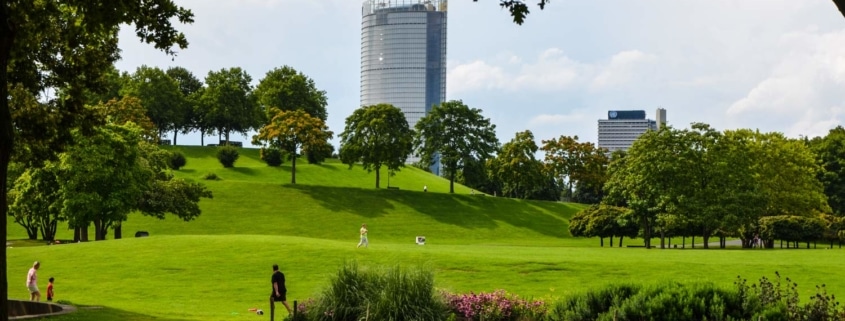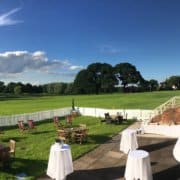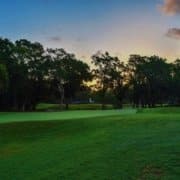Municipal Golf Course Upgrade: Staffing, Real Estate & Loyalty Programs
Case Study
Facility: 54-Hole public municipal golf course
Location: Southeastern United States
Ownership: Municipal – County Owned
Focus: Containing Costs and Return to Profitability
About: This is a county-owned golf facility that was losing several hundred thousand dollars on an annual basis. Because of its municipal status, they couldn’t make a great deal of money through the operation, but certainly didn’t want to lose. We were charged with helping the facility break even.
Challenges We Faced:
The challenges that we faced were numerous at this facility. On one hand, these drawbacks were keeping them from operating competitively, but on the other, each challenge meant considerable upside potential that the club could realize in a very short period of time. It was obvious they were due for a municipal golf course upgrade.
- Staffing Levels: The facility was way overstaffed with numerous employees paid higher than competitive averages with massive benefit packages.
- Managing Costs & Purchasing: Buying processes were extremely lax and the resulting contracts in place were unfair relative to market norms.
- Excess Acreage: They were incurring major additional costs of “park cutting” hundreds and hundreds of acres of turf.
- Loyalty Programs: The club had no membership offerings whatsoever
A Municipal Golf Course Upgrade
This club realized that their current course of action was not going to help them operate sustainably in their marketplace. Rounds were reducing despite dropping their green fees and offering deeply discounted off-peak incentives. The problems ran deeper and they knew it. Here’s how we were able to help.
Resolving the Payroll Issue:
Staffing issues are very difficult to fix immediately in a municipal setup. We simply developed a moratorium on hiring any new employees as normal attrition and retirement occurred. Within two years, we had the staff size back to where it needed to be, netting the club $300,000 in wages and benefits.
Repairing Budgeting and Broken Buying Processes:
The second challenge was much quicker to turn around – and the resulting returns happened in weeks/months rather than years. We evaluated in excruciating detail ever single line item in the club’s budget. This was an extremely deep dive into all expenditures, vendor relationships, contracts, subscription services and otherwise.
In just 1 year, we were able to save this facility $200,000 through our buying power. We were able to renegotiate existing and new agreements with vendors, deploy revised processes for club purchases for all department heads, and carve out more advantageous terms.
Streamlining Agronomy and Maintenance:
The challenge of maintained excess acreage was an interesting one to tackle. Through careful evaluation, real estate research and zoning requirements, we determined that about 50 acres of property did not need to be park cut. Instead, we could cut twice per year instead of a weekly basis.
The county pushed back on this initiative as they were very concerned about the aesthetics and how it would look to anyone traveling through the park around the facility. After negotiating with the county, we were ultimately able to 22 acres of our property down to a minimally maintained amount, although more so than our original targets with quarterly cuts.
Normally, transitioning 1 acre of property from fully maintained turf down to minimal maintenance can save a club as much as $17,000 per acre. In this case, given a few concessions to the county, we were able to save about $10,000 per acre.
Developing Prepaid Green Fee Programs:
Without any sort of membership or customer loyalty program in place, we decided to deploy an annual prepaid green fee membership program.
We conducted a comprehensive market analysis of existing players and customers, target markets, and our competitive set. The county had concerns that a discount program would reduce gross revenues, however it did not.
Payments were made at the beginning of the year, which boosted cash flow immediately and through the cooler off-season months normally seeing minimal revenues. Overall, we were able to boost rounds, which contributed to food and beverage increases, instruction programs, and guest play.
The Ultimate Outcome:
Through these new programs and negotiated policies, were were able to turn this municipal golf club around from an operating loss to breaking even in year 1.
As the longer term initiatives like adjusted staffing levels and our prepaid loyalty program began paying off, the club realized $150,000 in profit during year 2.
This money was reallocated and deployed on minor capital improvement upgrades to improve curb appeal and continue future growth in the local marketplace.
- How Golf Courses are Leveraging Cheaper Remote Consulting for Success - October 5, 2023
- Top 3 Reasons Why Private Golf Courses are Struggling in 2023 - September 5, 2023
- How to make the most of your prospect lists - May 7, 2019








